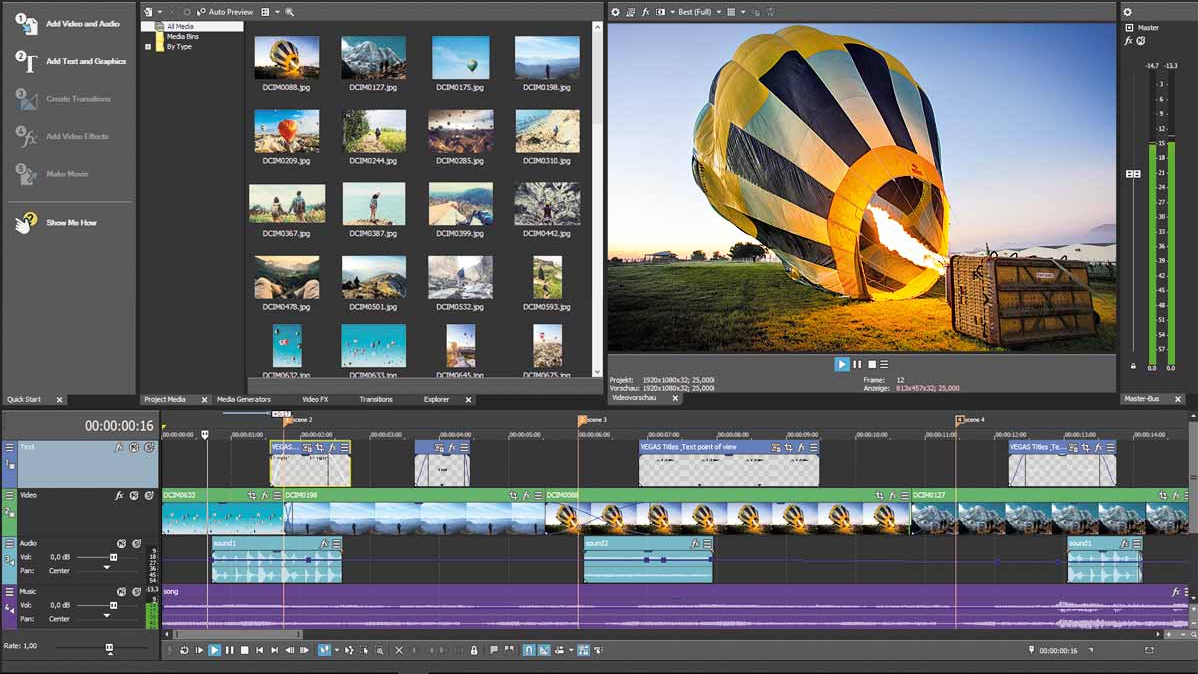Vegas Movie Studio 15 is here, with a cleaner interface and faster encoding

Magix has released the latest version of its home video editing software, Vegas Movie Studio 15. The new release offers faster rendering, enhanced support for videos from mobile devices, and interface improvements that make life easier for new users.
Vegas Movie Studio 15 uses technology taken directly from Vegas Pro 15 – the professional version of the software. We spoke to Gary Rebholz, product owner and site manager at Magix, to find out how that system works in practice and what it means for home users.
"One of the biggest results is the modernisation of the user interface," Rebholz told us. "The ease of use that we implement in Vegas Pro is all cascaded down to Vegas Movie Studio. For example, we now have hamburger buttons like on a mobile phone. We took the idea and implemented it to clean up the user interface, so new users aren’t overwhelmed by 25 buttons.
"The buttons you don’t often need are tucked away in hamburger menus. We’ve made those menus customizable, so you can change which buttons you want to see. We've also developed a new quick start dashboard with five or six numbered steps."
Support for mobile devices
There are also significant updates under the hood. "If you have Intel Quick Sync capability, we can tap into that and use it to speed up the rendering so it’s much faster," says Rebholz. "We do the same with graphics cards from Nvidia, but if you don’t have that, it will work perfectly well with just your CPU.
"We've also improved the video encoding that we use for certain common features. We’ve brought that straight down to Vegas Movie Studio. It’s a more modern implementation, with much more support for video from mobile devices. It just works out of the box – you don’t need any plugins to import video from your iPhone."

It's a system that works particularly well if you decide to move up from Vegas Movie Studio to Vegas Pro.
Sign up for breaking news, reviews, opinion, top tech deals, and more.
"When someone new to video editing starts with Vegas Movie Studio, for some people that’s all they need," Rebholz says, "but some users fall in love with video editing and have aspirations to do more. As those more ambitious users move to the professional software, there's much less of a learning curve than you might expect because the underlying technology is the same.
"They already have the basics in Vegas Movie Studio. That’s a big difference from a company that has a pro product and buys a consumer one. It makes transition as easy and painless as possible."
Moving on up
Vegas Pro was originally released in 1999 by a small company in Wisconsin called Sonic Foundry. It was acquired by Sony in 2003, and by Magix in 2016.
There were about a dozen new non-linear video editors on the market at the beginning, but Vegas Pro was unusual in its low system requirements. "We knew we were onto something different," says Rebholz. "Ours was the first non-linear editor to not need some sort of special hardware. You could pull any laptop off the shelf at Best Buy.
"Vegas Pro showed you the results of your edits immediately. If you added a filter to a clip in one of the other programs, you’d have to render it out. Here you were able to do it and see it immediately. That really changed the paradigm. After the success of Vegas Pro, it became apparent that there was hunger at the consumer end too.
"We realised all we needed to do was take the same code and make it more consumer friendly. There are fewer, or simplified features, but in the end they’re the same."
It's a strategy that's served Rebholz and his team well for almost 20 years, and we expect to see many more premium tools working their way into the consumer product in future releases.
- Also check out the best video editing software

Cat is TechRadar's Homes Editor specializing in kitchen appliances and smart home technology. She's been a tech journalist for 15 years, having worked on print magazines including PC Plus and PC Format, and is a Speciality Coffee Association (SCA) certified barista. Whether you want to invest in some smart lights or pick up a new espresso machine, she's the right person to help.